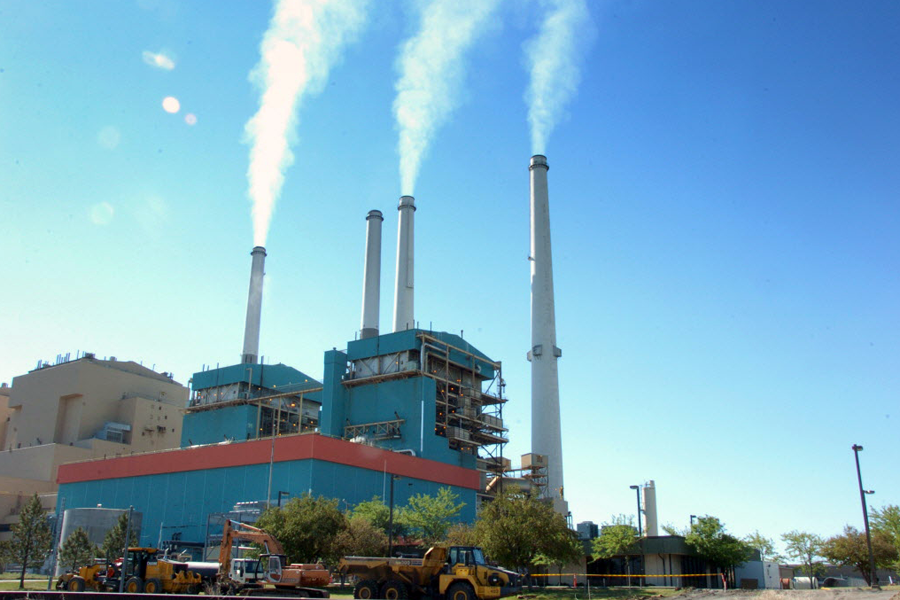Supreme Court upholds Obama EPA rules on cross-state pollution
Loading...
| WASHINGTON
The Supreme Court on Tuesday handed the Obama administration an important victory in its effort to reduce power plant pollution in more than two dozen Midwestern and Southern states, which blows downwind and leads to unhealthy air.
The decision caps a decades-long effort by the Environmental Protection Agency to find a legally acceptable way to ensure that states are good neighbors and don't contribute to pollution problems in downwind states, where environmental officials can do nothing to control it. The rule upheld Tuesday was EPA's third attempt to solve the problem
In a 6-2 decision, the court upheld a rule adopted by the EPA in 2011 to limit emissions that create smog and soot that drifts into the air above states along the East Coast.
The ruling means that the polluting states will be forced to reduce smokestack pollution that sullies the air in downwind states. Industry and upwind states had fought the effort and paint it as another attempt by the administration to shut down coal-fired power plants.
Writing for the majority, Justice Ruth Bader Ginsburg acknowledged the complexity of the problem before EPA.
"In crafting a solution to the problem of interstate air pollution, regulators must account for the vagaries of the wind," Ginsberg wrote.
Power companies and several states sued to block the rule from taking effect, and a federal appeals court in Washington agreed with them in 2012.
Sulfur dioxide and nitrogen oxide pollution from power plants can be carried long distances and the pollutants react with other substances to form smog and soot, which have been linked to respiratory illnesses and other disease. The cross-border pollution has prevented many cities and counties from complying with health-based air pollution standards set by law, because they have not authority to control it.
"The Supreme Court today laid to rest the well-worn issue of how to regulate air pollution that is transported hundreds of miles throughout the eastern U.S. and that makes it nearly impossible for states acting along to protect the health and welfare of their citizens," said Bill Becker, the executive director of the National Association of Clean Air Agencies, which represents air pollution control agencies in 45 states and territories and 116 major metropolitan areas nationwide.
The new downwind pollution rule was triggered by a federal court throwing out the previous rule penned by the Bush administration. The new rule would cost power plant operators $800 million annually in 2014, according to EPA estimates. That's in addition to the $1.6 billion spent per year to comply with the 2005 Bush rule that was still in effect until the government drafted the new one.
The EPA said the investments would be far outweighed by the hundreds of billions of dollars in health care savings from cleaner air. The agency said the rule would prevent more than 30,000 premature deaths and hundreds of thousands of illnesses each year.
Texas led 14 states and industry groups in challenging the rule. Most downwind states support it.
States had argued, and the lower court agreed, that they deserved a chance to figure out how much they were contributing to pollution in other states and how to reduce it before the EPA prescribed fixes. The lower court also faulted EPA for requiring states to reduce pollution through a complex formula based on cost that did not exactly match how much downwind pollution a state was responsible for.
Opponents of the decision Tuesday said it violated the intent of the Clean Air Act, which envisions states and the EPA working cooperatively to rein in air pollution.
"The Supreme Court majority has refused to allow the states to have any voice in the practicalities of determining the impact of their emissions on neighboring states," said Richard Faulk, senior director at George Mason Law School's Energy and Environment Initiative. Faulk filed a brief in the case in support of the arguments of industry and the upwind states.
The high court said the EPA was allowed under the Clean Air Act to implement federal plans in states that had not adequately addressed pollution that blows downwind. The court also ruled that the EPA also was authorized to consider how costly controls on pollution are and did not have to require states to reduce pollution by the exact amount they contribute to downwind states.
The court, agreeing with EPA, found such a requirement to be impossible in practice.
"The realities of interstate air pollution, however, are not so simple," Ginsberg says in the opinion. "Most upwind states contribute to pollution to multiple downwind states in varying amounts."
In a vigorous dissent, Justice Antonin Scalia said the EPA had "zero textual basis" in the Clean Air Act for applying a cost-benefit standard without regard to the amount of downwind pollution for which a state is responsible.
"Today's decision feeds the uncontrolled growth of the administrative state at the expense of government by the people," Scalia said, reading part of his dissent from the bench. The result "comes at the expense of endorsing, and thereby encouraging for the future, rogue administration of the law."
Justices Clarence Thomas joined Scalia in dissent. Justice Samuel Alito took no part in consideration of the case.
Ginsburg said Scalia's approach would result in "costly overregulation" and called it "both inefficient and inequitable."







